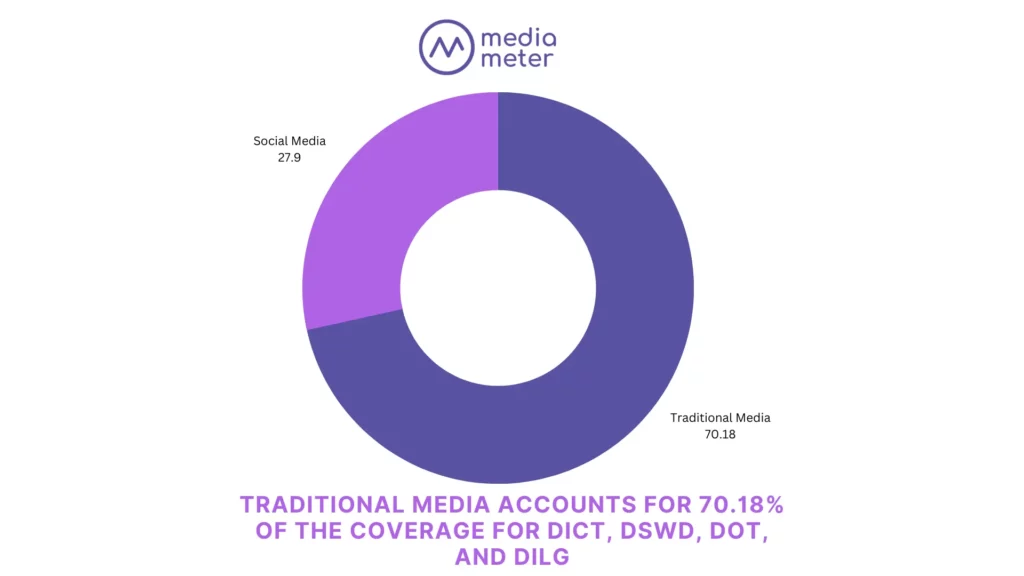The Main Story
The Sim Registration Act in the Philippines took center stage in April 2023, propelling the Department of Information and Communications Technology (DICT) to the forefront of media coverage. Among other government agencies, including the Department of Social Welfare and Development (DSWD), Department of the Interior and Local Government (DILG), and Department of Tourism (DOT), it was the DICT that dominated the headlines with its high media presence. With a staggering 2,854 news articles and social media posts, the DICT accounted for 27.9 percent of the total share of voice during the month.

Interestingly, the primary focus of media attention on the DICT, according to media monitoring insights, revolved around the Sim Registration Act. As the registration deadline approached, only 49.31 percent of sim cards had been registered, raising concerns among the government entities involved. The discussions surrounding the possibility of extending the registration period further fueled public interest and media coverage. This surge in attention placed the DICT at the forefront of public discourse in the Philippine digital landscape, where conversations often revolve around service providers.
A Media Rollercoaster
The DICT experienced a series of noteworthy events that propelled it to the center of media attention. Early in April, numerous news articles emerged as leading telecommunications companies, Smart and Globe, appealed to the government for an extension of the sim registration deadline. They argued that many subscribers, particularly those in remote areas, required additional time to obtain valid identification documents necessary to register their sim cards. The DICT found itself prominently featured in discussions surrounding this appeal, generating significant media coverage.
Subsequently, the DICT issued a press release stating that there would be no extension. This announcement created another surge in media coverage, sparking debates and raising concerns among the public. However, merely four days after the initial statement, the DICT once again found itself in the spotlight. In a turn of events, the department announced a 90-day extension to the sim registration deadline. This decision marked the final peak of media coverage during the month.
As the main government agency involved in executing the Sim Registration Act, the DICT received consistent coverage throughout April as the extension of the deadline for registration was deliberated and finally approved later in the month.
The DICT’s fluctuating stance on the sim registration deadline extension generated significant public interest and media scrutiny. The decision to grant an extension after initially denying it sparked discussions about the effectiveness of the registration process and the government’s responsiveness to the needs of subscribers. The DICT’s role in these developments ensured its consistent prominence in news articles, social media posts, and public conversations throughout the month of April, making it a major figure in discussions surrounding the country’s telecommunications landscape.
Monitoring Data and Generating Insights
The data reveals an intriguing trend, with traditional media accounting for a significant 70.18 percent of the coverage for all four departments.

This finding highlights the fact that news stories about these government entities thrive most prominently in traditional media outlets, such as newspapers, television, and radio. However, it also suggests that there may be untapped potential to improve their communication efforts on social media platforms. This is especially important, considering that the ease of sharing and spreading information on social media allows citizens to voice their opinions, concerns, and suggestions to a broader audience. This amplification effect can generate discussions, foster public discourse, and empower individuals to participate actively in governance processes. Governments can benefit from this wealth of public input by actively listening, engaging in dialogue, and incorporating public sentiment into decision-making processes.
As leaders in public service, it is imperative for these departments to stay informed about the media’s perception of their actions and policies. Monitoring media coverage provides valuable insights that can guide them in planning and optimizing their communication strategies. By understanding how their messages are being received and interpreted by the media, they can make informed decisions on how to effectively engage with the public and address any concerns or misconceptions.
While traditional media remains a vital channel for disseminating information, it is equally important for these departments to recognize the significance of social media. Social media has emerged as a powerful tool for reaching a broader audience, especially the younger generation relying heavily on digital channels for news and information. By harnessing the potential of social media, these departments can expand their reach, engage with the public in real time, and respond to emerging issues promptly.
Furthermore, investing in social media strategies, such as creating engaging content, actively responding to public inquiries, and leveraging influential voices, can help them establish a stronger online presence and effectively convey their message to a wider audience.
The Role of Media Monitoring
As seen, media monitoring insights play a fundamental role in generating effective strategies for public agencies and government institutions to respond effectively to the public. By closely tracking media coverage, these entities can stay updated with public sentiment, understand the narratives being shaped, and identify potential areas of concern or misinformation. Armed with this knowledge, they can tailor their communication efforts, address public inquiries, and promptly respond to emerging issues. Media monitoring insights enable proactive engagement, fostering transparency, trust, and effective communication between government entities and the public they serve. Ultimately, leveraging these insights empowers public departments to navigate the ever-changing media landscape and fulfill their commitment to accountable and responsive governance.
With Media Meter’s MediaWatch, you can cover real-time stories across blogs and online publications. Easily track stories with the most significant potential to affect your brand reputation. Request a demo or view our sample reports.






